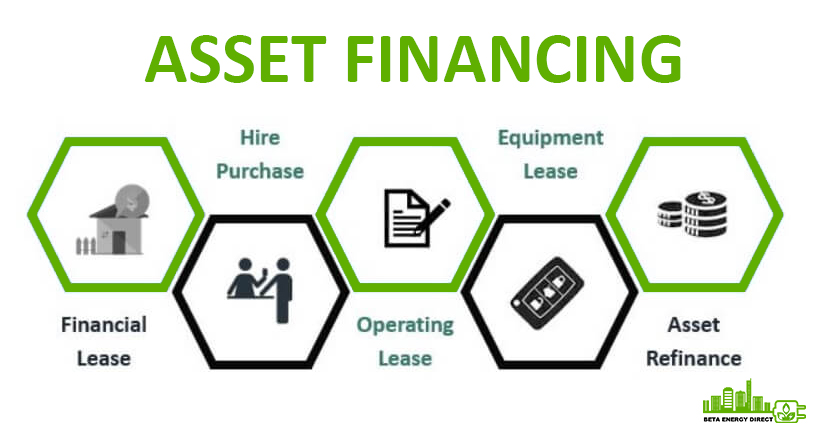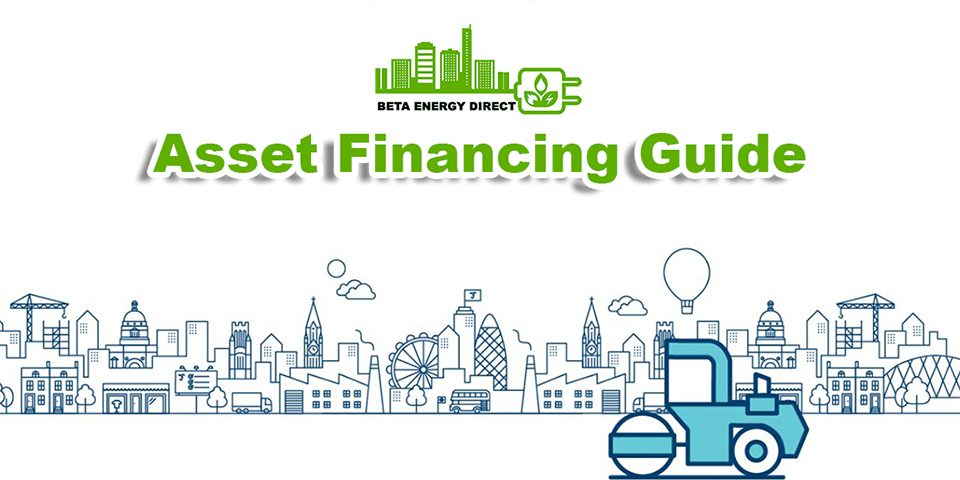- One Stop for all Business Utilities
- (0800) 999-1160
- 0333 772 9569
- [email protected]
Asset Financing Guide

Business Electricity Guide
August 31, 2022
Business Insurance Guide
September 16, 2022Contents
What is asset finance?
What is an asset?
What types of asset finance are there?
What are the advantages of asset finance?
What are the disadvantages?
What is asset finance?
The worth of assets such as automobiles, buildings, and equipment are leveraged through asset finance. When you require such assets but do not want to pay a significant cash payment to purchase them outright, asset finance can help you. This is accomplished by distributing the expense over time. You make smaller, regular payments over a set period of time. Fees and interest are assessed in addition to the asset’s cost. Throughout the term, you have complete access to the asset. Asset financing is commonly seen in the form of equipment leasing and hire purchases. Depending on the type of asset finance you use, the obligation for asset maintenance (repair work, insurance, etc.) may fall to you or the financial institution. The asset may be returned to the finance provider at the end of the term, or ownership may transfer to you. Alternatively, asset finance may allow you to access the cash value of an existing asset. You transmit the collateral asset to a lender, who provides a loan based on the asset’s value, under this type of agreement. This is referred to as an asset refinance loan. Merchant cash advances can be easier to obtain than traditional funding options, and they are an excellent option for businesses with few assets or poor credit history. Businesses that have been turned down for other types of financing may be eligible for a merchant cash advance. Merchant cash advances are popular among businesses that receive a high volume of card payments. Applications are welcome from sole proprietors, partnerships, and limited companies.
What is an asset?
An asset is a piece of property with inherent value. Examples include buildings, vehicles, and equipment. Businesses typically use assets to help with day-to-day operations. You can also use them to repay debts, obtain a loan, or fulfill a commitment.
What types of asset finance are there?
There are five main types of asset finance:
- Hire purchase:
Hiring vehicles, processing facilities, or machinery for your business is similar to purchasing a new kitchen or furniture for your home.
HP enables your company to purchase a new asset in installments rather than paying a significant upfront sum. It’s a less complicated form of equity funding than equipment leasing, and you end up owning the vehicle or equipment once the payments are completed. In most cases, the asset appears on your balance sheet as a positive item from the start of the agreement, but the supplier owns the investment until the last installment is paid. This means you won’t be able to sell the asset during the term. A small fee known as the Purchase Option Fee is frequently required when transferring ownership of a vehicle. Check out UK Loan Guides.
- Finance lease, (sometimes called a capital lease):
A finance lease is a contract in which a renting company purchases a business asset on your behalf and then rents it to you. You make monthly mortgage payments during the ‘primary rental period’ until you’ve paid off the equipment’s cost plus interest. You then have the option to prolong the rental period, return the equipment, or transfer the asset on behalf of the leasing company to a third party. In some cases, you may be entitled to a portion of the proceeds from the asset’s sale. It is important to note that, while you may never own the asset, you are responsible for all insurance and maintenance costs during the rental period.
- Equipment leasing:
Equipment renting is similar to finance leasing in that you can own the appliances at the end of the agreement. You rent the equipment from a vendor or a leasing firm for a set period of time and make regularly scheduled payments for the usage of the investment vehicle. The leasing company is in charge of the equipment’s upkeep. You can lengthen the lease, return the asset to the lender, improve the item, or purchase it completely with a balloon payment at the end of the rental period. You can rent anything from laptop computers and printers to commercial automobiles and machinery, depending on the size of your company and its needs.
Monthly installment payments are typically lower than hire purchase payments because appliance lease agreements are based on asset depreciation rather than the entire cost price. However, if you choose to buy the equipment with a lump sum payment, it may end up being more costly than if you bought it outright. Equipment renting can provide possible tax benefits and is best suited to initial companies that lack the working funds to invest in their own assets as well as established SMEs looking to upgrade their equipment.
- Operating leasing:
Although comparable to finance leasing, an operating lease is typically used for specialized plants or equipment that a company only needs for a limited time or does not want to own. You lease the asset for a short or long term, regularly making payments for the time you have it. One of the most significant benefits of this kind of lease is the ability to improve the equipment on a regular basis, occasionally even during the rental period.
- Asset refinance:
There are two types of asset refinancing. First, a corporation commits its assets as collateral for a loan. The assets are used as collateral. If you fail to repay the loan, the creditor may sell the assets to recoup their cash. Once the principal, service charges, and interest have been paid, the asset is returned to you free and clear. Buildings, property, contract terms, unsold stock, plants, and equipment can all be used as leverage, and because the loan is protected by hard assets, the cost is comparatively lesser than with other types of business financing.
- Contract hire:
Contract hire is strictly for vehicles and is intended for businesses looking to reduce the time-consuming tasks of supplying and preserving their own fleets. A provider finds and retains the vehicles for the business, which then pays routine installments over an agreed-upon lease period. Fleet management facilities may be part of the cost of the contract hire. The provider is responsible for disposing of the vehicles at the end of the lease term.
What are the advantages of asset finance?
- Big-ticket items can be purchased for little or no money upfront.
- Spreads the cost over time
- Clarifies costs, aids profitability, and promotes growth
- There is no need for additional collateral. Leverage is an asset.
- In many cases, the financial institution bears the cost of maintenance, not you (depending on the type of finance chosen).
- Allows you to use capital somewhere else in your business.
- Depending on the type of financing chosen, asset devaluation may be borne by the finance supplier rather than you.
- Some types of asset finance require the provider to replace the item if it becomes faulty during the rental or loan period.
What are the disadvantages?
- The provider owns the asset until it is completely paid for, and you may never possess it at all (depends on the type of finance chosen)
- If you do not make your payments on time, the supplier may confiscate the asset.
- The majority of asset financing is not for a short amount of time. Although asset financing for less than a year is possible, the minimum period is typically one year. Most types of asset financing have much longer terms.
- Depending on the type of asset finance chosen, you may be subject to liability for asset damage that exceeds the scope of the agreement.



